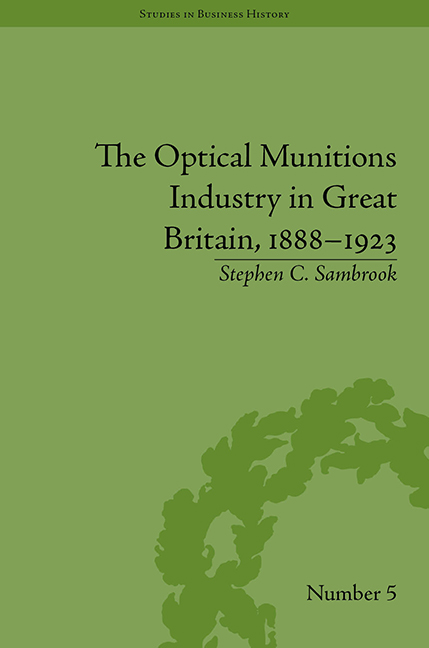Book contents
- Frontmatter
- CONTENTS
- Preface and Acknowledgements
- List of Figures and Tables
- List of Technical Terms
- Introduction
- 1 The Emergence of the Industry, 1888–99
- 2 The Growth in Importance from the Boer War to 1906
- 3 Expansion and Consolidation, 1907–14
- 4 The Impact of War, August 1914 to mid-1915
- 5 Industrial Mobilization: The Ministry of Munitions and its Relationship with the Industry
- 6 The Industry's Wartime, 1915–18
- 7 Industrial Demobilization and Implosion, 1919
- 8 Adaption and Survival, 1919–23
- Conclusion
- Notes
- Works Cited
- Index
5 - Industrial Mobilization: The Ministry of Munitions and its Relationship with the Industry
- Frontmatter
- CONTENTS
- Preface and Acknowledgements
- List of Figures and Tables
- List of Technical Terms
- Introduction
- 1 The Emergence of the Industry, 1888–99
- 2 The Growth in Importance from the Boer War to 1906
- 3 Expansion and Consolidation, 1907–14
- 4 The Impact of War, August 1914 to mid-1915
- 5 Industrial Mobilization: The Ministry of Munitions and its Relationship with the Industry
- 6 The Industry's Wartime, 1915–18
- 7 Industrial Demobilization and Implosion, 1919
- 8 Adaption and Survival, 1919–23
- Conclusion
- Notes
- Works Cited
- Index
Summary
The second stage of the optical munitions industry's war was one of large-scale industrial mobilization, a process inextricably interwoven with the policies and attitudes of the Ministry of Munitions. Its creation in the late spring of 1915 and, in particular, the setting up of a department dedicated to optical output was responsible for increasing both the volume and diversity of production between then and the end of the war in 1918. To do so, the Ministry brought into being what can be best described as a ‘conscript’ optical munitions industry which largely submerged the identity of what had existed before the war and during its first ten months. The story of this mobilization is complicated by the existence within the Ministry's Optical Munitions and Glassware Department (OMGD) of parallel aims for short-term and long-term change within the whole of Britain's optical industries. The OMGD essentially looked to replace what it presented as an outmoded, inward looking, pre-war optical instruments industry with a reconstructed one that would not only meet wartime needs but be able to secure a dominant position in the foreign markets which were optimistically expected to emerge after the defeat of Germany removed its large and diverse optical industry from the international stage. These aims were sometimes in conflict with each other, and struggled to find adequate expression within a framework of problems that were grounded in shortages of materiel and an unsatisfactory technological infrastructure.
- Type
- Chapter
- Information
- The Optical Munitions Industry in Great Britain, 1888–1923 , pp. 107 - 132Publisher: Pickering & ChattoFirst published in: 2014



